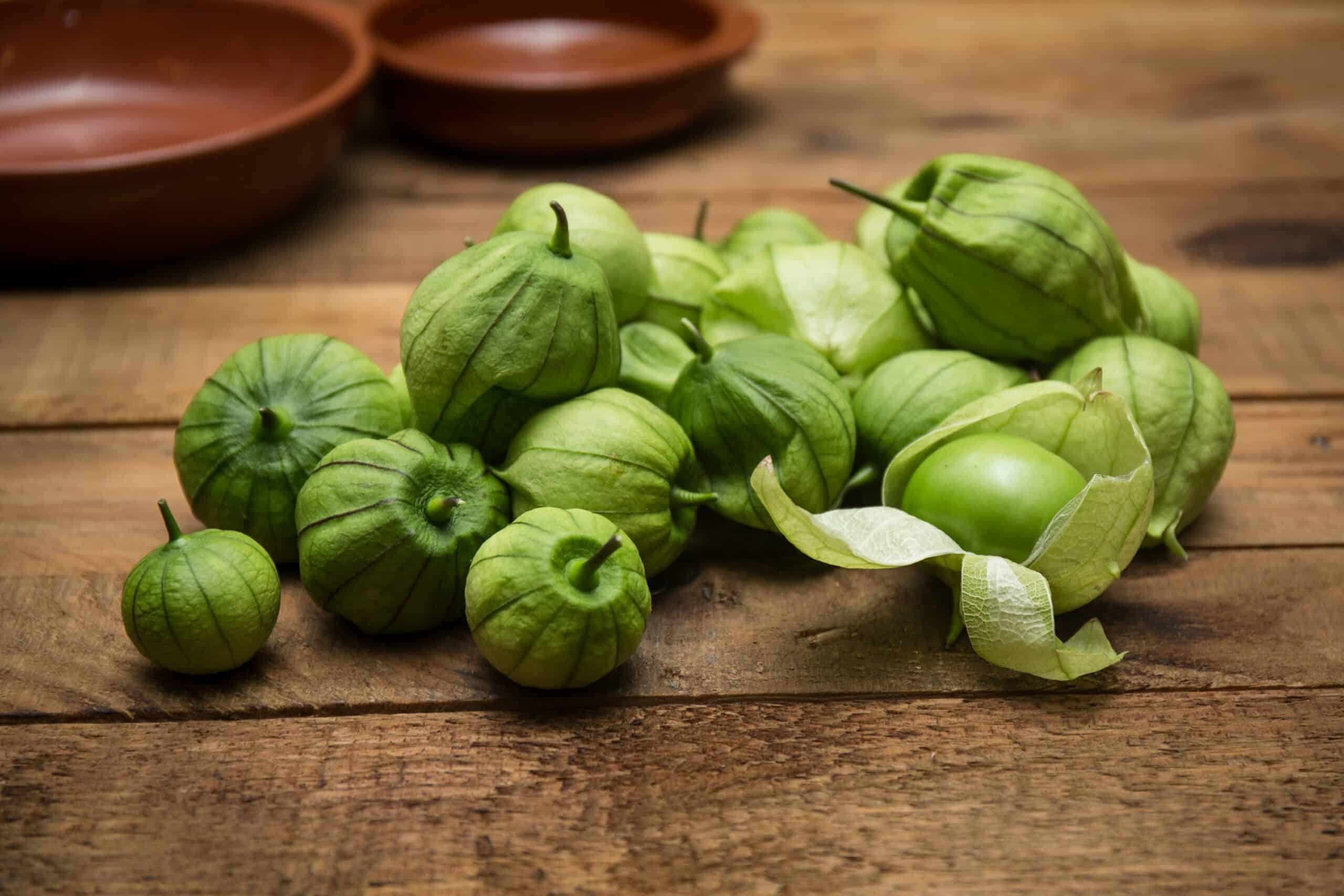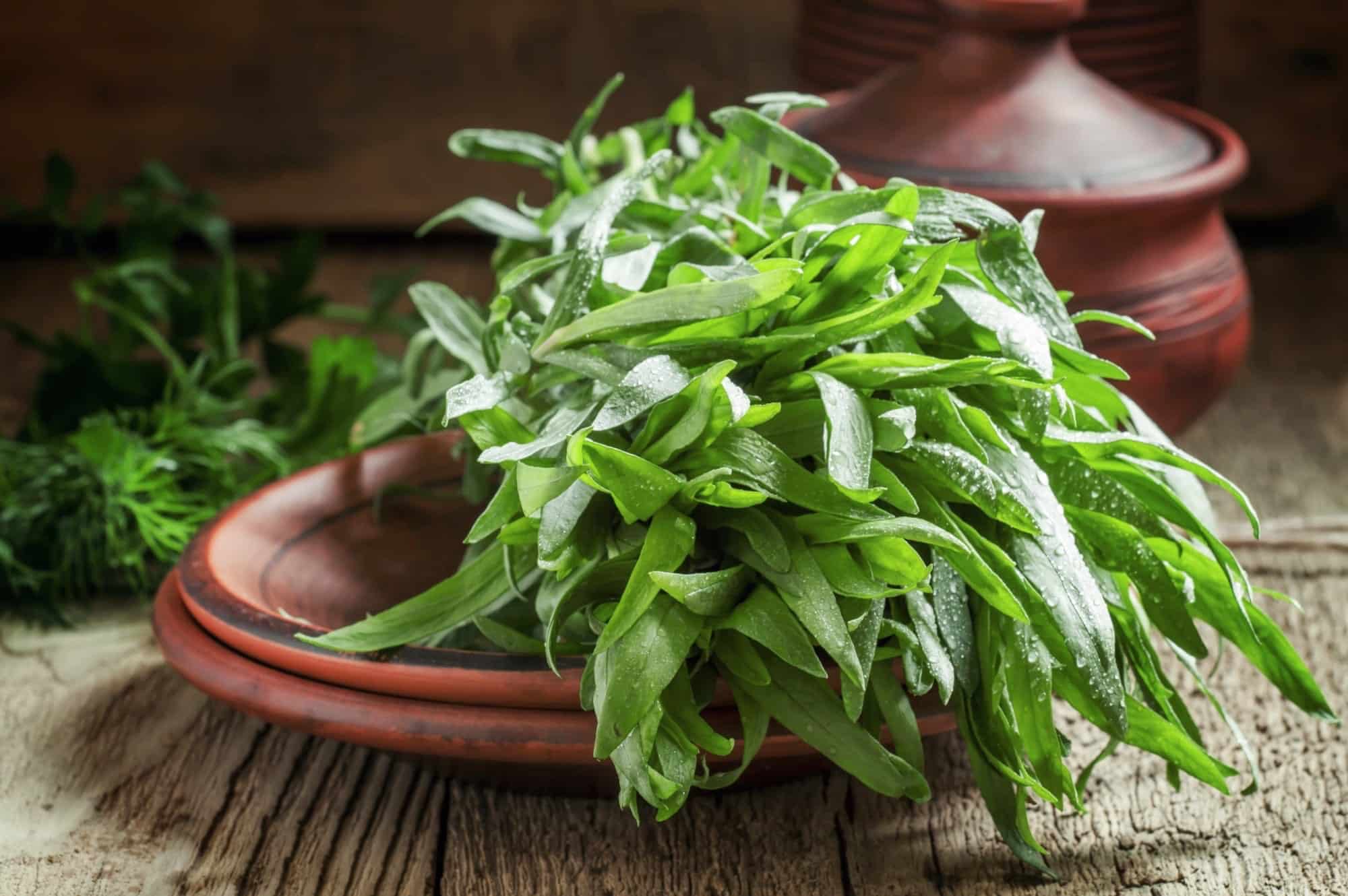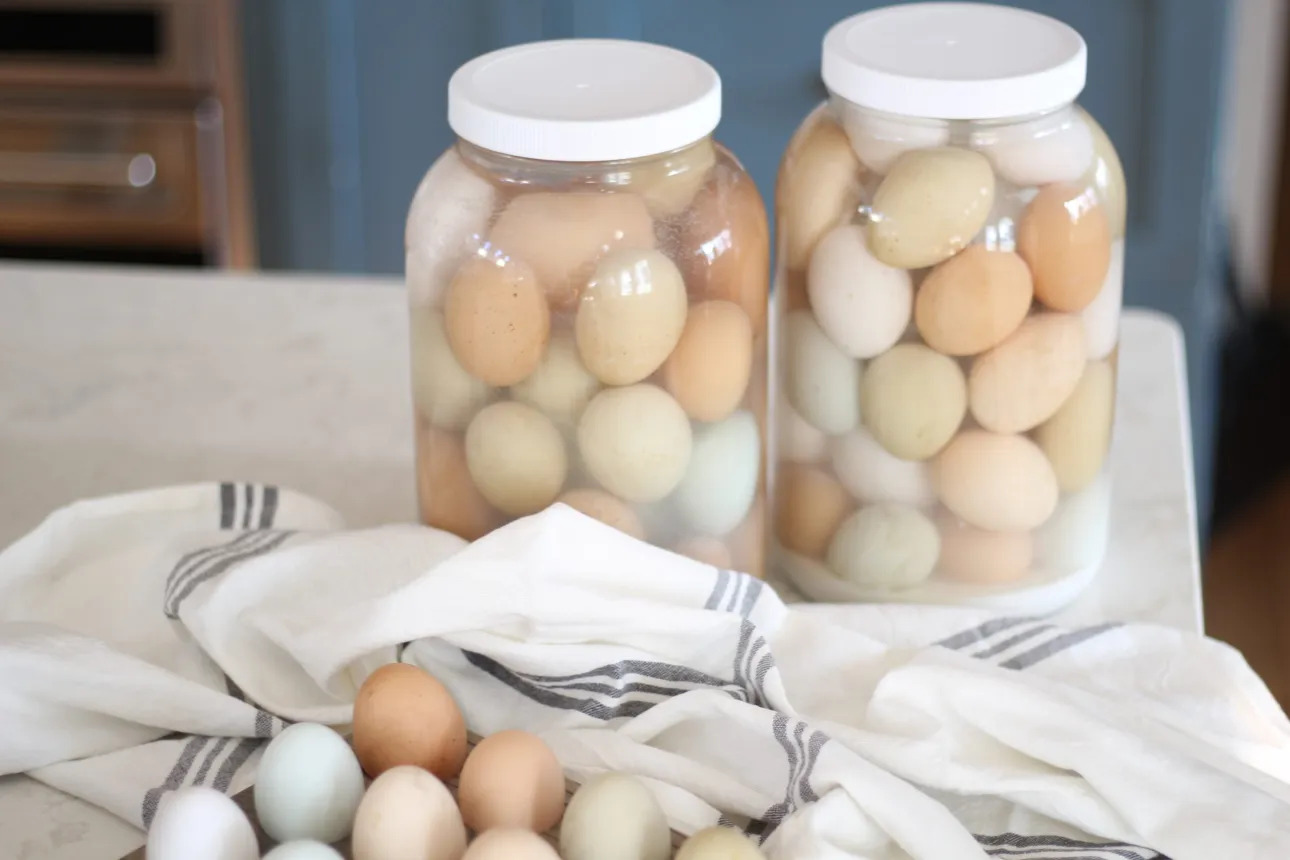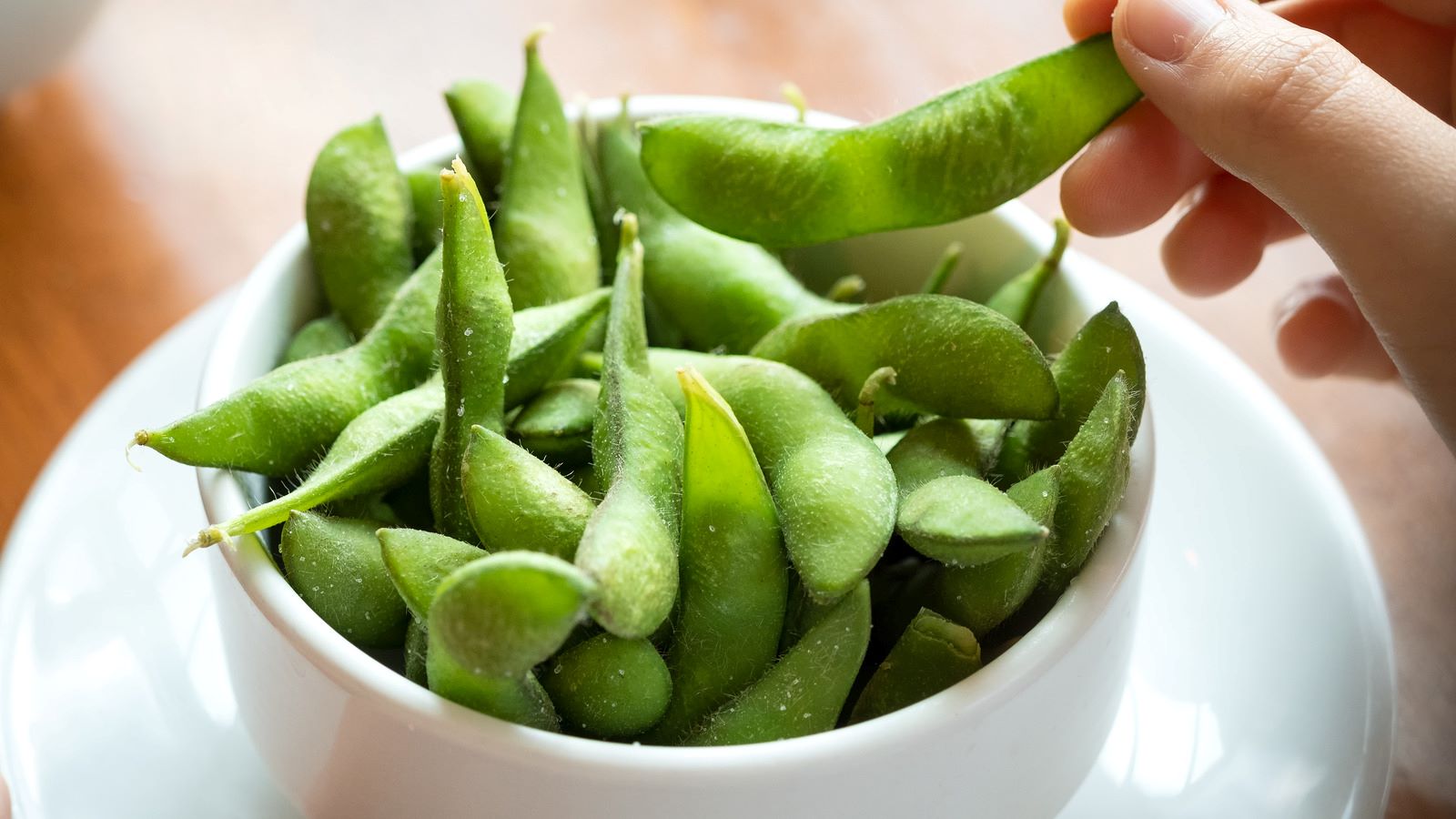

Articles
How To Store Fresh Tomatillos
Modified: December 7, 2023
Learn how to store fresh tomatillos with our helpful articles. Keep your tomatillos fresh and flavorful for longer with these storage tips.
(Many of the links in this article redirect to a specific reviewed product. Your purchase of these products through affiliate links helps to generate commission for Storables.com, at no extra cost. Learn more)
Introduction
Welcome to the world of fresh tomatillos! These small, vibrant green fruits are a staple in Mexican cuisine and are becoming increasingly popular in dishes worldwide. With their tangy, slightly citrusy flavor, tomatillos add a delicious twist to salsas, sauces, and stews. If you’ve discovered the joy of working with fresh tomatillos, you may be wondering how to store them to keep them fresh for as long as possible.
In this article, we will guide you through the process of selecting, preparing, and storing fresh tomatillos so that you can enjoy their vibrant flavors whenever you need them. Whether you’ve grown your own tomatillos or bought them from a local market, proper storage techniques can help extend their shelf life and preserve their taste and texture.
So, let’s dive in and learn how to store fresh tomatillos properly!
Key Takeaways:
- Properly storing fresh tomatillos ensures extended freshness and vibrant flavors. Choose, prepare, and refrigerate or freeze tomatillos for optimal shelf life and enjoy their tangy taste in a variety of dishes.
- Whether refrigerating, freezing, or preserving in jars, tomatillos can be stored for future use in salsas, sauces, stews, and more. Get creative in the kitchen and experiment with different recipes to make the most of your preserved tomatillos.
Read more: How To Store Fresh Lavender
Choosing Fresh Tomatillos
When it comes to selecting fresh tomatillos, it’s essential to choose ones that are ripe and in good condition. Here are some tips to help you pick the best-quality tomatillos:
- Color: Look for tomatillos that are bright green and have a smooth, glossy skin. Avoid ones that have dull or yellowish patches, as it may indicate the fruit is overly ripe or starting to spoil.
- Firmness: Gently squeeze the tomatillos to check for firmness. They should feel slightly firm when applying light pressure but not too hard or too soft. Avoid ones that are mushy or have soft spots.
- Size: While tomatillos come in various sizes, it’s generally recommended to choose medium-sized ones that are about the size of a golf ball. These are often easier to work with and have a good texture and flavor.
- Weight: Pick tomatillos that feel relatively heavy for their size. This indicates that they have a higher water content and are likely more flavorful.
Remember, the quality and freshness of the tomatillos you choose will greatly impact their storage life. So, take a little time to carefully select the best ones available.
Preparing Fresh Tomatillos for Storage
Before storing fresh tomatillos, it’s important to properly prepare them. Follow these steps to ensure your tomatillos are clean and ready for storage:
- Remove the husks: Start by removing the dry, papery husks that cover the tomatillos. Gently peel them away, revealing the bright green fruit underneath.
- Rinse the tomatillos: After removing the husks, rinse the tomatillos under cold water to remove any dirt or debris. Gently rub each tomatillo with your hands to ensure a thorough cleaning.
- Dry the tomatillos: Once rinsed, pat the tomatillos dry with a clean kitchen towel or paper towels. Avoid leaving them wet, as excess moisture can lead to spoilage.
- Inspect for any damages: Take a moment to inspect each tomatillo for any signs of damage, such as bruises or cuts. Discard any tomatillos that appear damaged, as they can accelerate spoilage and affect the quality of the others.
By following these simple steps, you’ll ensure that your fresh tomatillos are clean and blemish-free, ready to be stored properly for future use.
Storing Fresh Tomatillos in the Refrigerator
When it comes to storing fresh tomatillos, refrigeration is the key. Follow these steps to store them in the refrigerator:
- Wrap individually: To prevent moisture loss and maintain freshness, wrap each tomatillo individually in a paper towel. This will absorb any excess moisture and prevent them from sticking together.
- Place in a breathable container: Once wrapped, place the tomatillos in a breathable container such as a perforated plastic bag or a ventilated container. This helps to maintain the optimum humidity level and prevents condensation, which can lead to spoilage.
- Store in the vegetable crisper: Put the container of wrapped tomatillos in the vegetable crisper drawer of your refrigerator. This compartment is designed to keep produce fresh by maintaining a slightly higher humidity level.
- Check regularly: Check on the tomatillos periodically to ensure they are still in good condition. Remove any that show signs of spoilage to prevent it from spreading to the others.
- Use within 1 to 2 weeks: Stored properly in the refrigerator, tomatillos can typically last for about 1 to 2 weeks. However, it’s best to use them within the first week for optimal freshness and flavor.
Remember, refrigeration helps to slow down the ripening process and preserve the quality of the tomatillos. By following these storage guidelines, you can enjoy fresh tomatillos for an extended period, giving you plenty of time to use them in your favorite recipes.
Store fresh tomatillos in a paper bag at room temperature for up to a week, or in the refrigerator for up to two weeks. Avoid storing them in a plastic bag, as this can cause them to spoil more quickly.
Freezing Fresh Tomatillos
If you have an abundance of fresh tomatillos and want to preserve their flavor for a longer time, freezing is a great option. Here’s how you can freeze fresh tomatillos:
- Prepare the tomatillos: Start by removing the husks and rinsing the tomatillos under cold water. Pat them dry with a kitchen towel or paper towels.
- Cut into desired pieces: Depending on how you plan to use the tomatillos in the future, you can either freeze them whole or cut them into smaller pieces. If you prefer frozen tomatillos to have a chunky texture, dice or slice them. For smoother sauces or salsas, puree the tomatillos in a blender or food processor.
- Flash-freeze: Lay the prepared tomatillos in a single layer on a baking sheet lined with parchment paper or a silicone mat. Make sure the pieces are not touching. Place the baking sheet in the freezer and let the tomatillos freeze for a few hours, or until they are firm.
- Transfer to freezer bags or containers: Once the tomatillos are frozen, transfer them to freezer bags or airtight containers. Write the date on the bags or containers to keep track of their freshness.
- Return to the freezer: Place the bags or containers of frozen tomatillos back into the freezer for long-term storage. They can be kept for up to 6 months.
When you’re ready to use the frozen tomatillos, simply remove the desired amount from the freezer and thaw them in the refrigerator or use them directly in your recipes. However, keep in mind that the texture of thawed tomatillos may be softer than fresh ones, so they are best used in cooked dishes like stews, soups, or sauces.
By freezing fresh tomatillos, you can enjoy their flavors and benefits throughout the year, even when they are out of season.
Read more: How To Store Fresh Oregano
Preserving Fresh Tomatillos in Jars
If you’re a fan of homemade salsas or sauces, preserving fresh tomatillos in jars is an excellent option. Canning them allows you to enjoy the tangy flavor of tomatillos long after their season has ended. Here’s how you can preserve fresh tomatillos in jars:
- Sterilize the jars: Before starting the canning process, sterilize the jars and lids in boiling water or run them through a dishwasher cycle. This step ensures that the jars are clean and free from any bacteria.
- Prepare the tomatillos: Remove the husks from the tomatillos and rinse them under cold water. Pat them dry and cut them into desired sizes – you can leave them whole, dice them, or puree them depending on your preference.
- Make the preserving liquid: In a pot, combine water, vinegar, salt, and any desired seasonings or spices. Bring the mixture to a boil, ensuring the salt has dissolved completely.
- Fill the jars: Place the prepared tomatillos into the sterilized jars, leaving about ½ inch of headspace at the top. Pour the hot preserving liquid over the tomatillos, making sure they are completely submerged. Use a spatula or a spoon to remove any air bubbles.
- Seal the jars: Wipe the rim of each jar with a clean, damp cloth to remove any residue. Place the lid on top and screw the band to secure it. Make sure the lid is tight but not overly tightened.
- Process the jars: Depending on your altitude and jar size, process the jars in a water bath canner according to the recommended processing time. This helps to create a vacuum seal and ensure the tomatillos are safely preserved.
- Store and enjoy: Once the jars have cooled, check the seals to ensure they are tight. Store the jars in a cool, dark place and let them sit for at least two weeks before opening. Use the preserved tomatillos within a year for the best quality.
By preserving fresh tomatillos in jars, you can enjoy the flavors of summer all year round and have delicious homemade salsas and sauces at your fingertips.
Using Stored Tomatillos
Once you have stored your fresh tomatillos using the methods mentioned earlier, it’s time to put them to good use! Here are some ideas for using your stored tomatillos:
- Salsas and sauces: Tomatillos are famously known for their use in tangy, flavorful salsas. You can make a classic salsa verde by blending together tomatillos, onions, garlic, cilantro, and some lime juice. This versatile salsa can be enjoyed with tacos, enchiladas, grilled meats, or simply as a dip with tortilla chips. Stored tomatillos also make a fantastic base for a variety of sauces, such as enchilada sauce or a tangy marinade for poultry or fish.
- Stews and soups: Add a unique twist to your favorite stews and soups by incorporating stored tomatillos. They can lend a lovely tartness and acidity to dishes like posole, green chili stew, or chicken tortilla soup.
- Roasted tomatillos: Roasting stored tomatillos can enhance their natural flavors and add depth to your dishes. Simply halve or quarter the tomatillos, drizzle them with a little olive oil, and roast them in a preheated oven until they become soft and slightly charred. These roasted tomatillos are delicious in tacos, burritos, or as a topping for grilled meats.
- Pickle or relish: For a tangy and crunchy addition to sandwiches or burgers, you can pickle your stored tomatillos. Slice them into thin rounds, place them in a jar, and cover with a vinegar-based brine. Let them sit for a few days to develop the flavors, and then enjoy your homemade tomatillo pickle or relish.
- Chutneys and jams: Explore the sweeter side of tomatillos by using them to make chutneys or jams. Combine tomatillos with sugar, lime juice, and your favorite spices to create a unique chutney that pairs well with cheese, grilled meats, or even as a sandwich spread. You can also make a tangy tomatillo jam that can be enjoyed with toast, biscuits, or as a condiment for cheese plates.
With stored tomatillos on hand, the possibilities are endless. Get creative in the kitchen and experiment with different recipes and flavor combinations to make the most of your preserved tomatillos.
Conclusion
Congratulations! You have now learned how to properly store fresh tomatillos to preserve their flavors and extend their shelf life. By following the tips provided in this article, you can ensure that your tomatillos remain fresh and vibrant for longer periods, allowing you to enjoy their tangy taste in a variety of dishes whenever you desire.
Remember, when choosing fresh tomatillos, go for bright green ones that are firm, and free from any signs of damage. Prepare them by removing the husks, rinsing them, and patting them dry before storing.
If you plan to use the tomatillos in the near future, storing them in the refrigerator wrapped in paper towels is the best option. However, if you have an excess supply, freezing them or preserving them in jars can be an excellent way to enjoy their flavors long after their season has ended.
Whether you decide to freeze them for future use or preserve them in jars for delicious salsas and sauces, be sure to label and date your stored tomatillos for easy reference.
Now that you have a good understanding of how to store fresh tomatillos, it’s time to get creative in the kitchen. Experiment with different recipes and enjoy the unique flavor and tanginess that fresh tomatillos bring to your culinary creations.
So, stock up on fresh tomatillos, follow the storage techniques mentioned in this article, and let your taste buds experience the deliciousness that these vibrant green fruits have to offer!
Frequently Asked Questions about How To Store Fresh Tomatillos
Was this page helpful?
At Storables.com, we guarantee accurate and reliable information. Our content, validated by Expert Board Contributors, is crafted following stringent Editorial Policies. We're committed to providing you with well-researched, expert-backed insights for all your informational needs.















0 thoughts on “How To Store Fresh Tomatillos”